Conflict Zones
‘We are suffering’: Displaced families bear burden of South Sudan conflict | Humanitarian Crises News
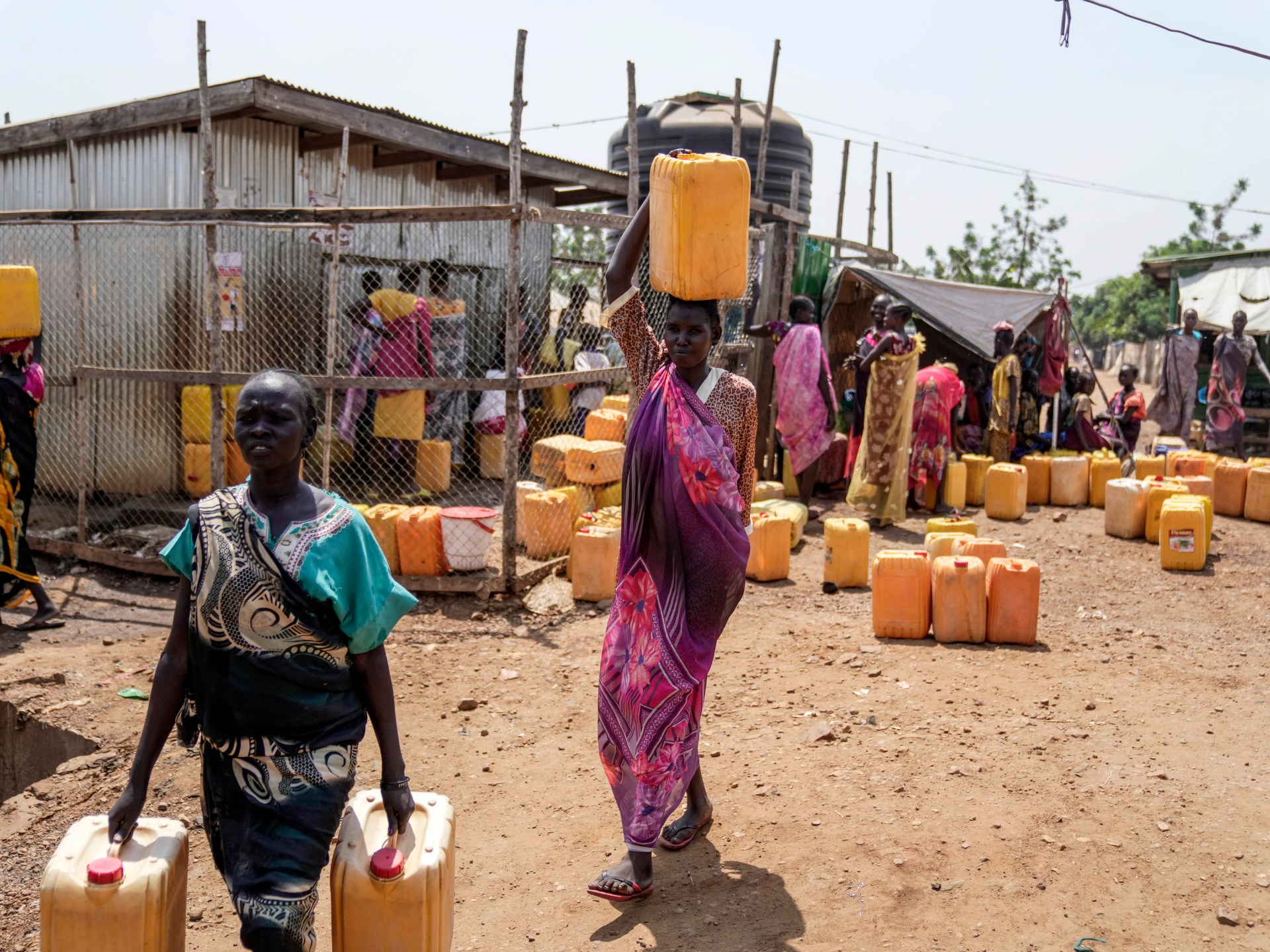
Malakal, South Sudan – One morning in mid-April, Nyandeng Meeth was fetching water from a borehole in Mat town, in South Sudan’s Jonglei State, before heading home to cook for her nine children and open her small street stall.
Suddenly, the sound of gunfire and shelling tore through the familiarity and routine of the 50-year-old mother’s everyday life. She remembers the town being plunged into chaos as people scrambled to save what they could – their families or a few belongings.
Afraid for her children, Meeth rushed home. “I [had] left the children at home when I went to fetch water,” she said. “I ran home, but when I returned, there was no one.” Along with the rest of the community, the nine siblings aged 7 to 15 had fled.
The attacks, reportedly by Sudan People’s Liberation Army-in-Opposition forces (SPLA-IO), were part of a broader escalation in fighting between government forces – the South Sudan People’s Defence Forces (SSPDF) – and opposition troops, including the White Army group aligned with First Vice President Riek Machar.
Since late February, violence has swept across Jonglei and Upper Nile states, displacing more than 130,000 people. Aerial bombardments and fighter raids have since emptied entire towns, disrupted aid and cut off vital trade routes from neighbouring Ethiopia.
The fighting is also prompting the country’s worst cholera outbreak in two decades, aid groups say, as patients fled medical centres where they were receiving treatment when the conflict broke out, spreading the disease in the process.
But for Meeth, recent events have revived the terror she felt nearly a decade ago, during an earlier phase of the conflict, when her husband was killed.
In 2013, just two years after South Sudan became an independent country, a civil war erupted between forces loyal to President Salva Kiir and those aligned with Machar. The war killed an estimated 400,000 people and displaced 2.5 million – more than a fifth of the population.
Meeth’s husband, who was a soldier, was killed in 2015.
Though a peace agreement was signed between the warring factions in 2018, disagreements over fulfilling the deal, including delayed elections, have kept the rivalry brewing.
Unresolved political disputes have driven cycles of violence over the years. But things escalated this year with clashes between government forces and opposition fighter groups, and the arrests of opposition leaders including Machar. The United Nations has warned that the country could be on the brink of a return to a full-scale civil war.

‘My life in Mat was better’
On that mid-April day in Mat town, more explosions rang out around Meeth, who had still not located her children. She ran towards the Sobat River, where panicked residents scrambled to flee across to neighbouring Upper Nile State.
In the crowd, she spotted her youngest daughter, 7, running alone towards the riverbank. She grabbed her hand, climbed into a canoe, and crossed, not knowing whether her eight other children had survived.
They landed in Panam, a town in Panyikang County in Upper Nile, about 2km (1.2 miles) from their home, where thousands of displaced families who have fled bouts of conflict from previous years are gathered, with little access to food, water, or medical care.
Meeth said she spent two anxious nights there, unable to eat or rest. “If your child is lost, you can’t be happy; even when I get food, I didn’t feel like eating it,” she said, sitting beneath a coconut tree that has now become her shelter.
Volunteers from the Panam community searched along the riverbanks and through the surrounding bushes for missing people. After two days, Meeth’s eight other children were found.
“Some of them hid in the river, while others stayed under the shades of trees,” Meeth said, explaining that her children could still hear gunfire from where they were, so they hid out of fear.
The ordeal had taken a toll on them. Their skin, she said, had gone pale from hunger and exposure, and their bodies were covered in mosquito bites.
Now, she and her children sleep under the coconut trees along the river, surviving on the roots of yellow water lilies and other wild plants, as fighting is still preventing aid access.
Before the latest wave of violence, Meeth supported her family in Mat by selling tea, sugar, and other household essentials from an informal stall. Sometimes, relatives returning from fishing would share their catch, helping feed the family when drought or floods ruined their harvest.
But the fighting has taken what little she had. “My life in Mat was better because I had shelter, I had a mosquito net and shoes, and access to a hospital,” she said. “I had two goats but had to leave them,” she added, saying relatives who fled Mat after she did told her the rebels had stolen her livestock.

‘Life is very difficult’
Even before the latest wave of fighting, daily life in South Sudan was marked by hardship.
The country ranks among the world’s poorest, and a recent World Bank report estimates that 92 percent of the population lives in poverty and nearly 7.7 million are facing crisis, emergency or catastrophic levels of hunger.
Not far from the Meeth family in Panam, 70-year-old Nyankhor Ayuel sat under the shade of another coconut tree with her seven children.
They fled from Khorfulus in Jonglei’s Pigi County in April.
“We were sitting at home with the children. We had already prepared food, and as we started eating, the shelling started,” she said. “We ran without any luggage or food.”
Though they escaped the immediate violence, Ayuel said hunger and illness now pose a different kind of threat. Pregnant and nursing mothers, she said, are suffering from diarrhoea and vomiting due to lack of access to clean water and food.
“Life is very difficult,” she told Al Jazeera. “There’s no food or medical facilities where we are staying.”
For families like Zechariah Monywut Chuol’s, who also fled Khorfulus, hardship has only deepened.
The 57-year-old father of 12 had just started building a permanent home for his family when the shelling began. “I was at home digging the foundation when it started. We ran to the riverbank and got into canoes,” he said.
Now, like so many others in Panam, Chuol and his family live under the trees, surviving on coconut water and whatever fruits they can find along the Sobat River.
“If hunger could kill like sickness, many people would have already died,” he said.

A fragile future
Across South Sudan, more than 9.3 million people – three-quarters of the population – require humanitarian assistance, according to the UN. Nearly half of them are children.
The conflicts in Upper Nile and Jonglei have brought all aid efforts to a ground halt. Aerial bombardment and danger forced aid agencies to withdraw staff, shut down cholera treatment centres, and stop aid deliveries.
This weekend, the “deliberate bombing of [a Doctors Without Borders] hospital in Old Fangak” in Jonglei killed several people, the medical charity known by its French initials, MSF, said.
Last month, the World Food Programme (WFP) paused operations in several areas due to access constraints.
Mary-Ellen McGroarty, South Sudan country director for WFP, said physical access can be challenging at the best of times. “But with active conflict, WFP cannot go up, we cannot go down the river. And these are areas where there are no roads, no cars, no trucks,” she told a UN press briefing at the time.
According to Peter Matai, director of the government-run Relief and Rehabilitation Commission, which works with international organisations to support the internally displaced, more than 30,000 people who fled violence in Pigi County are now sheltering in displacement sites such as Panam, where aid has yet to arrive.
“We’ve reported the situation to both the state government and international organisations,” said Matai. But several weeks into the fighting, “aid agencies are still waiting for clearance from the UN Office for the Coordination of Humanitarian Affairs to access displacement sites and deliver aid.”
With the violence ongoing and humanitarian access limited, thousands of displaced families remain in limbo, caught between conflict, disease and hunger – uncertain when, or if, it will be safe to return home.
For Meeth, who also serves as a deacon in the Episcopal Church of South Sudan, all she can do now is pray for her children’s safety, and hope that others will step in to help.
“We are suffering,” she said. “We need our people living abroad to hear that we are in a bad situation. They should help us provide for our needs.”
This piece was published in collaboration with Egab.
Conflict Zones
Gunmen kill three police officers in southern Russia’s Dagestan region | Crime News
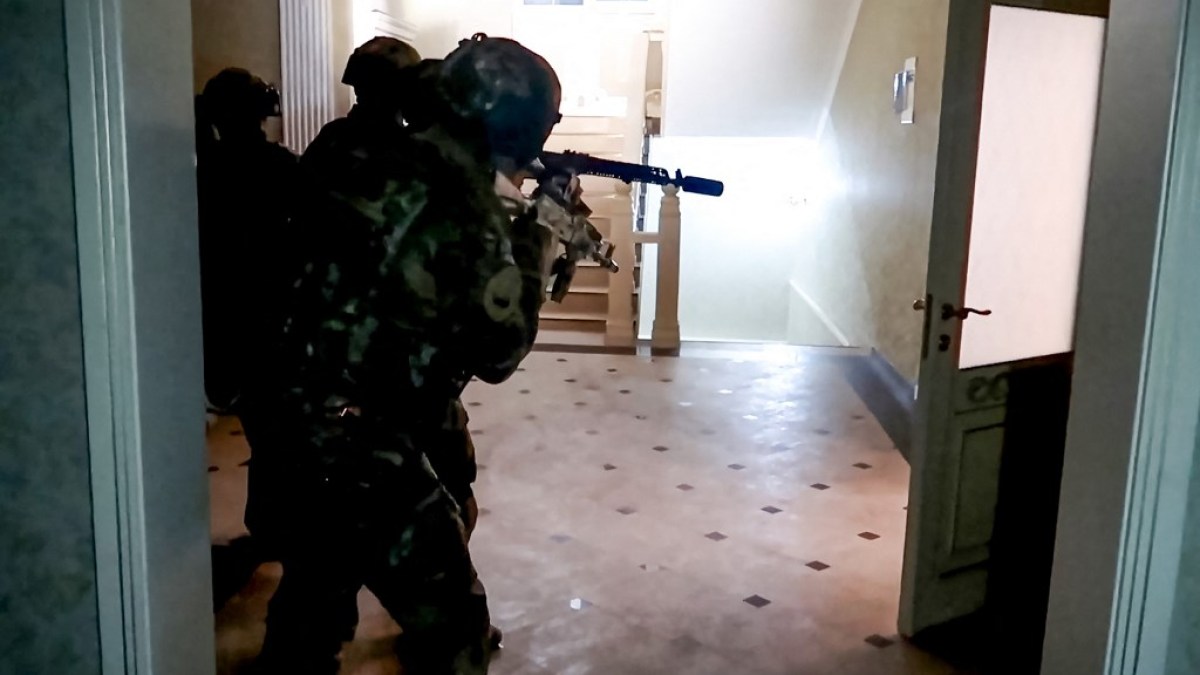
Assailants open fire on police in Dagestan’s capital, Makhachkala, leaving several dead and injured.
Three police officers have been killed and at least four others injured after gunmen opened fire on traffic police in southern Russia’s Republic of Dagestan, according to regional authorities.
The attack took place on Monday in the capital, Makhachkala, when police attempted to stop a car, Dagestan leader Sergei Melikov said.
The shooting began at about 14:20 local time (11:20 GMT), the Interior Ministry confirmed.
Two assailants were shot dead at the scene. Local officials identified the men, both born in 2000, but did not say how many others were involved. State media reported that additional attackers fled in a vehicle, prompting a wider manhunt.
Footage circulating on Telegram, verified by the Reuters news agency, showed bodies lying on the road beside a police car. Gunshots could be heard in the background as onlookers gathered at the scene.
At least two other attackers, alongside injured officers and civilians – including a 17-year-old girl – were taken to hospital. One later died, state media reported. Officials have launched a criminal investigation.
Dagestan, a majority-Muslim region bordering the Caspian Sea, has witnessed a number of deadly attacks in recent years.
In March, Russian security forces said they killed four alleged ISIL (ISIS) fighters who were planning to attack a local Interior Ministry office.
The latest violence in Dagestan follows a separate security operation last week, when Russia’s Federal Security Service (FSB) claimed to have killed a man suspected of planning bombings on the Moscow metro and a Jewish religious site in the capital region.
In June 2024, at least 20 people were killed after armed men attacked a synagogue, churches and police in the Dagestan region.
That attack came three months after at least 133 people were killed in a March 2024 attack on a concert in Moscow’s Crocus City Hall.
While the Afghanistan-based ISIL affiliate in Khorasan Province (ISKP) claimed responsibility for the worst attack to hit Russia in years, Moscow at the time claimed without evidence that Ukraine had a played role.
Though both Russia and the United States declared the territorial defeat of ISIL (ISIS) in Iraq and Syria by 2019, offshoots of the group – especially ISKP – have re-emerged, posing renewed threats across Europe, Central Asia and the Middle East.
Conflict Zones
Russia-Ukraine war: List of key events, day 1,166 | Russia-Ukraine war News
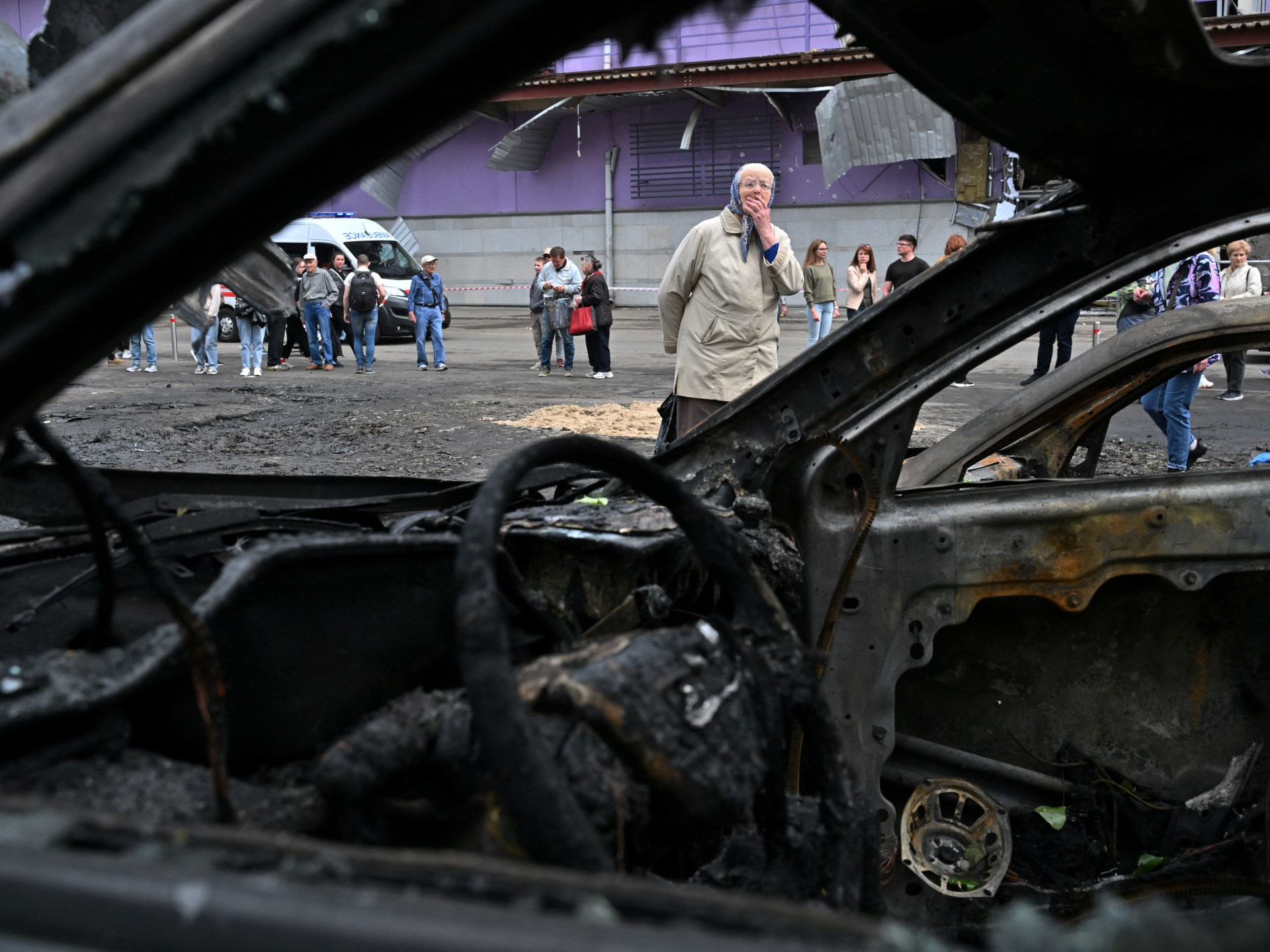
These are the key events on day 1,166 of Russia’s war on Ukraine.
Here is where things stand on Monday, May 5:
Fighting
Russian forces repelled four drones flying towards Moscow, the capital’s mayor, Sergei Sobyanin, said in a post on Telegram. There were no initial reports of damage or casualties, Sobyanin said, adding that emergency services were working at the scene.
Ukrainian forces attacked a factory in Russia’s Bryansk region, destroying much of the plant, Governor Alexander Bogomaz said on Telegram. There were no casualties, Bogomaz said.
Russian forces destroyed 13 Ukrainian drones overnight over Russia’s Rostov, Belgorod and Bryansk regions, Moscow’s Ministry of Defence said on Sunday.
A Russian drone attack injured at least 11 people, including two children, in Kyiv’s Obolonskyi and Sviatoshynskyi districts, Timur Tkachenko, the head of the Kyiv City Military Administration, said on social media.
Russian drones attacked Cherkasy in central Ukraine, where emergency services reported that one person was injured and residential buildings and civil infrastructure suffered damage.
Ukrainian forces downed 69 of 165 drones launched overnight by Russia, the country’s Air Force said on Sunday.
Politics and diplomacy
Ukrainian President Volodymyr Zelenskyy said he does not believe Russia will follow a three-day truce it declared to coincide with Moscow’s Victory Day celebrations on May 9. “This is not the first challenge, nor are these the first promises made by Russia to cease fire,” Zelenskyy said at a news conference with Czech President Petr Pavel.
Russian President Vladimir Putin said in a documentary released on Sunday that there had so far been no need to use nuclear weapons in Ukraine, and expressed “hope” that they would not be necessary.
United States President Donald Trump said he and his advisers have had “very good discussions” about Russia and Ukraine in recent days, without elaborating.
Moscow said that Chinese President Xi Jinping will visit Russia from May 7 to May 10, joining Putin at commemorations of the Allied victory against Nazi Germany.
Romania’s far-right presidential candidate, George Simion, who opposes military aid to Ukraine, decisively won the first round of the country’s rerun vote, setting up a contest with the centrist mayor of Bucharest, Nicusor Dan, on May 18.
Conflict Zones
Houthis maintain pressure on Israel as US launches more strikes on Yemen | Politics News
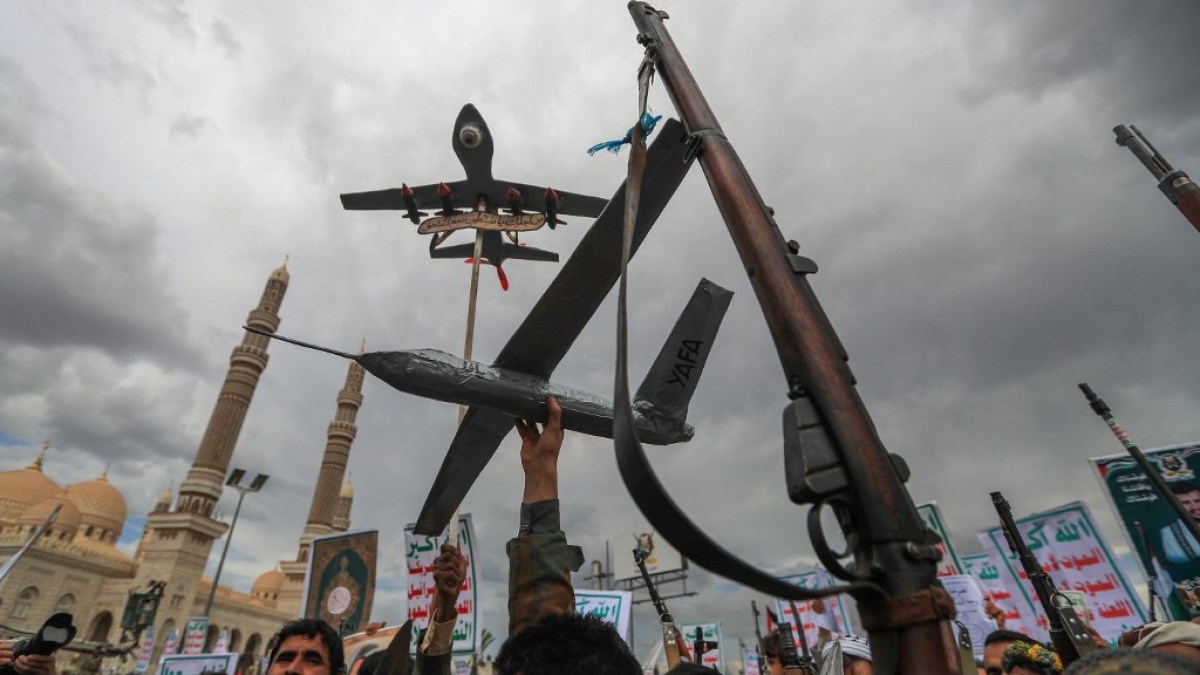
Prime minister of Yemen’s internationally recognised government has resigned amid political turmoil.
Israel has intercepted a missile fired from Yemen, the third such attack by Houthi forces in a 24-hour span, as the United States continues daily attacks on the country.
The Israeli army confirmed on Saturday it had activated air raid sirens across parts of the country following the missile launch.
No injuries or major damage were reported. Houthi spokesperson Yahya Saree claimed responsibility for the attack, calling it a response to Israeli operations in Gaza.
The Houthis have increasingly targeted Israel and shipping routes in the Red Sea, stating that their actions are acts of solidarity with Palestinians as Israel continues its assault on Gaza and the occupied West Bank.
The Houthis did not carry out attacks during the Gaza ceasefire earlier this year until Israel blocked all aid into the besieged enclave in early March and followed that with a full resumption of the war.
In the meantime, Houthi-affiliated Al Masirah TV reported on Saturday that the US launched two air raids on Yemen’s Kamaran Island and as-Salif district in the port city of Hodeidah.
The new attacks come a day after the same news outlet reported seven US attacks on the Ras Isa oil port in as-Salif district in Hodeidah. Last month, a US strike on the same port killed at least 80 people and wounded 150 in one of the deadliest attacks on the country by US forces.
The US has also ramped up its air campaign in Yemen, launching its most extensive military operations in the Middle East since President Donald Trump assumed office in January.
US forces claim to have struck Houthi positions, however, there have been numerous civilian casualties.
The high civilian toll from US strikes is drawing increasing alarm. The UK-based monitor Airwars reported that between 27 and 55 civilians were killed in March alone. April’s deaths are expected to be higher.
Houthi sources say at least 68 African migrants died in a single overnight strike on Monday, with additional casualties reported around the capital.
Yemen’s prime minister resigns
As the conflict intensifies, political instability is growing within Yemen.
Ahmed Awad bin Mubarak, the prime minister of the internationally recognised government, announced his resignation on Saturday, citing persistent challenges, including his inability to reshuffle the cabinet.
Government insiders said a power struggle with Presidential Council leader Rashad al-Alimi triggered Mubarak’s departure.
Within hours of the announcement, the presidential council named Finance Minister Salem Saleh bin Braik as prime minister, according to the state-run SABA news agency. The council also named bin Mubarak as an adviser to the ruling body, without addressing his claims.
Mubarak’s political career has been closely linked to the long-running war in Yemen. He rose to prominence after being abducted by Houthi fighters in 2015 while serving as chief of staff to then-president Abd-Rabbu Mansour Hadi.
Much of the international community does not recognise the Houthis, also known as Ansar Allah (supporters of God), even though the armed Iran-aligned group controls most parts of Yemen, including the capital, Sanaa, and some of the western and northern areas close to Saudi Arabia.
-
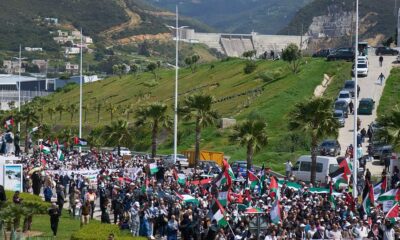
 Africa1 day ago
Africa1 day agoProtesters want Morocco to sever ties with Israel, target strategic ports
-

 Europe2 days ago
Europe2 days agoFather of crypto entrepreneur rescued from kidnappers after having finger severed
-

 Sports1 day ago
Sports1 day agoScottie Sheffler ties PGA Tour record to claim first victory of 2025 at the CJ Cup Byron Nelson
-
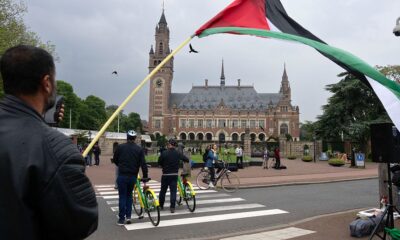
 Africa22 hours ago
Africa22 hours agoDemonstrators angry at ICJ’s decision to dismiss Sudan’s genocide case against UAE
-
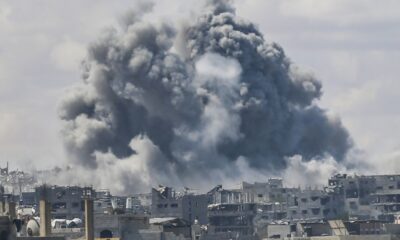
 Middle East1 day ago
Middle East1 day agoIsrael plans ‘conquest’ of Gaza in expanded offensive | Israel-Palestine conflict News
-

 Africa1 day ago
Africa1 day agoDRC: M23 rebels seize strategic town despite peace talks
-

 Middle East19 hours ago
Middle East19 hours agoIsrael bombs Yemen’s Hodeidah port after attack near Tel Aviv | Politics News
-

 Sports1 day ago
Sports1 day agoNaomi Osaka: Four-time grand slam champion wins first title since becoming a mother




